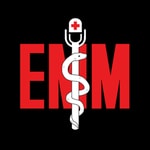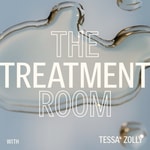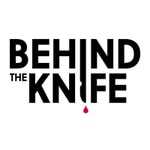Emergency Medical Minute – Details, episodes & analysis
Podcast details
Technical and general information from the podcast's RSS feed.

Emergency Medical Minute
Emergency Medical Minute
Frequency: 1 episode/3d. Total Eps: 1111

Recent rankings
Latest chart positions across Apple Podcasts and Spotify rankings.
Apple Podcasts
🇨🇦 Canada - medicine
26/07/2025#74🇬🇧 Great Britain - medicine
26/07/2025#62🇺🇸 USA - medicine
26/07/2025#73🇬🇧 Great Britain - medicine
25/07/2025#79🇺🇸 USA - medicine
25/07/2025#72🇨🇦 Canada - medicine
24/07/2025#97🇺🇸 USA - medicine
24/07/2025#63🇺🇸 USA - medicine
23/07/2025#53🇺🇸 USA - medicine
22/07/2025#63🇺🇸 USA - medicine
21/07/2025#86
Spotify
No recent rankings available
Shared links between episodes and podcasts
Links found in episode descriptions and other podcasts that share them.
See allRSS feed quality and score
Technical evaluation of the podcast's RSS feed quality and structure.
See allScore global : 43%
Publication history
Monthly episode publishing history over the past years.
Episode 918: Automated Blood Pressure Cuffs
lundi 26 août 2024 • Duration 02:53
Contributor: Aaron Lessen, MD
Educational Pearls:
How does an automated blood pressure cuff work?
-
Automated blood pressure cuffs work differently than taking a manual blood pressure.
-
While taking a manual blood pressure, one typically listens for Korotkoff sounds (turbulent flow) while slowly deflating the cuff.
-
An automatic blood pressure cuff only senses the pressure in the cuff itself and specifically pays attention to oscillations in the pressure caused by when the pressure of the cuff is between the systolic (heart squeezing) and diastolic (heart relaxed) pressures.
-
These oscillations are at a maximum when the pressure in the cuff matches the mean arterial pressure (MAP) and therefore the machines are most accurate at reporting the MAP.
-
The machines then use the MAP and other information about the oscillations to estimate the systolic and diastolic pressures, which are less accurate.
What should you do if you need more accurate systolic and diastolic blood pressures?
-
Take a manual blood pressure.
-
Get an arterial-line (a-line), which provides continuous data for the blood pressure at the end of a catheter.
What happens if the cuff is too big or too small for the patient?
-
If the cuff is too small it will overestimate the pressure.
-
If the cuff is too large it will underestimate the pressure.
What should you do if the cuff cycles a bunch of times before reporting a blood pressure?
-
It probably isn’t very accurate so consider another method.
Bonus fact!
-
The MAP is not directly in the middle of the systolic and diastolic pressures but is weighted towards the diastolic pressure. The MAP can be calculated by adding two-thirds of the diastolic pressure to one third of the systolic pressure. For example if the BP is 120/90 the MAP is 100 mmHg.
References
-
Benmira, A., Perez-Martin, A., Schuster, I., Aichoun, I., Coudray, S., Bereksi-Reguig, F., & Dauzat, M. (2016). From Korotkoff and Marey to automatic non-invasive oscillometric blood pressure measurement: does easiness come with reliability?. Expert review of medical devices, 13(2), 179–189. https://doi.org/10.1586/17434440.2016.1128821
-
Liu, J., Li, Y., Li, J., Zheng, D., & Liu, C. (2022). Sources of automatic office blood pressure measurement error: a systematic review. Physiological measurement, 43(9), 10.1088/1361-6579/ac890e. https://doi.org/10.1088/1361-6579/ac890e
-
Vilaplana J. M. (2006). Blood pressure measurement. Journal of renal care, 32(4), 210–213. https://doi.org/10.1111/j.1755-6686.2006.tb00025.x
Summarized by Jeffrey Olson, MS3 | Edited by Meg Joyce, MS1 & Jorge Chalit, OMS3
Donate: https://emergencymedicalminute.org/donate/
Episode 917: Heat-Related Illnesses
lundi 19 août 2024 • Duration 04:46
Contributor: Megan Hurley, MD
Educational Pearls:
-
Heat cramps
-
Occur due to electrolyte disturbances
-
Most common electrolyte abnormalities are hyponatremia and hypokalemia
-
Heat edema
-
Caused by vasodilation with pooling of interstitial fluid in the extremities
-
Heat rash (miliaria)
-
Common in newborns and elderly
-
Due to accumulation of sweat beneath eccrine ducts
-
Heat syncope
-
Lightheadedness, hypotension, and/or syncope in patients with peripheral vasodilation due to heat exposure
-
Treatment is removal from the heat source and rehydration (IV fluids or Gatorade)
-
Heat exhaustion
-
Patients have elevated body temperature (greater than 38º C but less than 40º C)
-
Symptoms include nausea, tachycardia, headache, sweating, and others
-
Normal mental status or mild confusion that improves with cooling
-
Treatment is removal from the heat source and hydration
-
Classic heat stroke
-
From prolonged exposure to heat
-
Defined as a core body temperature > 40.5º C, though not required for diagnosis or treatment
-
Presentation is similar to heat exhaustion with the addition of neurological deficits including ataxia
-
Patients present “dry”
-
Exertional heat stroke
-
Prolonged exposure to heat during exercise
-
Similar to classic heat stroke but the patients present “wet” due to antecedent treatment in ice baths or other field treatments
-
Management of heat-related illnesses includes:
-
Cooling
-
Rehydration
-
Evaluation of electrolytes
-
Antipyretics are not helpful because heat-induced illnesses are not due to hypothalamic dysregulation
References
-
Casa DJ, McDermott BP, Lee EC, et al. Cold water immersion: the gold standard for exertional heatstroke treatment. Exerc Sport Sci Rev 2007; 35:141.
-
Ebi KL, Capon A, Berry P, et al. Hot weather and heat extremes: health risks. Lancet 2021; 398:698.
-
Epstein Y, Yanovich R. Heatstroke. N Engl J Med 2019; 380:2449.
-
Gardner JW, JA K. Clinical diagnosis, management, and surveillance of exertional heat illness. In: Textbook of Military Medicine, Zajitchuk R (Ed), Army Medical Center Borden Institute, Washington, DC 2001.
-
Khosla R, Guntupalli KK. Heat-related illnesses. Crit Care Clin 1999; 15:251.
-
Lipman GS, Gaudio FG, Eifling KP, et al. Wilderness Medical Society Clinical Practice Guidelines for the Prevention and Treatment of Heat Illness: 2019 Update. Wilderness Environ Med 2019; 30:S33.
Summarized by Jorge Chalit, OMSIII | Edited by Meg Joyce, MS1
Donate: https://emergencymedicalminute.org/donate/
Episode 908: Sympathomimetic Drugs
lundi 17 juin 2024 • Duration 07:54
Contributor: Taylor Lynch MD
Educational Pearls:
- Overview:
- Sympathomimetic drugs mimic the fight or flight response, affecting monoamines such as dopamine, norepinephrine, and epinephrine
- Limited therapeutic use, often abused.
- Types:
- Amphetamines: Methamphetamine, Adderall, Ritalin, Vyvanse
- MDMA (Ecstasy)
- Cocaine (Both hydrochloride salt & free based crack cocaine)
- Theophylline (Asthma treatment)
- Ephedrine (For low blood pressure)
- BZP, Oxymetazoline (Afrin), Pseudoephedrine (Sudafed)
- MAO Inhibitors (treatment-resistant depression)
- Mechanisms:
- Act on adrenergic and dopaminergic receptors.
- Cocaine blocks dopamine and serotonin reuptake.
- Methamphetamines increase stimulatory neurotransmitter release
- MAO Inhibitors prevent neurotransmitter breakdown.
- Symptoms:
- Agitation, tachycardia, hypertension, hyperactive bowel sounds, diuresis, hyperthermia.
- Severe cases: Angina, seizures, cardiovascular collapse.
- Diagnosis:
- Clinical examination and history.
- Differentiate from anticholinergic toxidrome by diaphoresis and hyperactive bowel sounds.
- Tests: EKG, cardiac biomarkers, chest X-ray, blood gas, BMP, CK, coagulation studies, U-tox screen.
- Treatment:
- Stabilize ABCs, IV hydration, temperature monitoring, benzodiazepines.
- Avoid beta-blockers due to unopposed alpha agonism.
- Whole bowel irrigation for body packers; surgical removal if packets rupture.
- IV hydration for high CK levels.
- Observation period often necessary.
- Recap:
- Mimic sympathetic nervous system.
- Key symptoms: Diaphoresis, hyperactive bowel sounds.
- Treatment: Supportive care, benzodiazepines.
- Use poison control as a resource.
References:
-
Costa VM, Grazziotin Rossato Grando L, Milandri E, Nardi J, Teixeira P, Mladěnka P, Remião F. Natural Sympathomimetic Drugs: From Pharmacology to Toxicology. Biomolecules. 2022;12(12):1793. doi:10.3390/biom12121793
-
Kolecki P. Sympathomimetic Toxicity From Emergency Medicine. Medscape. Updated March 11, 2024. https://emedicine.medscape.com/article/818583-overview
-
Williams RH, Erickson T, Broussard LA. Evaluating Sympathomimetic Intoxication in an Emergency Setting. Lab Med. 2000;31(9):497-508. https://doi.org/10.1309/WVX1-6FPV-E2LC-B6YG
Summarized by Steven Fujaros | Edited by Jorge Chalit, OMSIII
Podcast 827: Allergies in Peds
lundi 7 novembre 2022 • Duration 02:50
Contributor: Aaron Lessen, MD
Educational Pearls:
- Recent study evaluated if early exposure to an allergen impacted the rate of allergy development later in childhood
- Children were exposed to peanut, milk, wheat, and egg allergens at 3 months of age and then followed for 3 years
- 2.5-3% of children who were not exposed developed allergies to these allergens
- 1% of children exposed to the allergens developed allergies to these allerrgens
- Exposing 63 children to allergens at 3 months would prevent the development of food allergy in one child with no significant adverse events
- Future recommendations will likely be to gradually introduce allergens to children starting around 3 months
References
Skjerven HO, Lie A, Vettukattil R, et al. Early food intervention and skin emollients to prevent food allergy in young children (PreventADALL): a factorial, multicentre, cluster-randomised trial. Lancet. Jun 25 2022;399(10344):2398-2411. doi:10.1016/s0140-6736(22)00687-0
Summarized by Mark O’Brien, MS4 | Edited by John Spartz, MD, & Erik Verzemnieks, MD
In an effort to promote diversity, equity, and inclusion in Emergency Medicine, The Emergency Medical Minute is proud to present our 2nd annual Diversity and Inclusion Award. We support increasing the representation of underrepresented groups in medicine and extend this award to individuals applying to emergency medicine residencies during the 2022-2023 cycle. For information on award eligibility and the application process, visit https://emergencymedicalminute.com/edi-award/
The Zika Virus
samedi 23 avril 2016 • Duration 05:11
Transcranial Doppler in Concussion
samedi 23 avril 2016 • Duration 07:37
Anticholinergictoxidrome
mercredi 20 avril 2016 • Duration 02:37
420! A Marijuana Podcast
mercredi 20 avril 2016 • Duration 16:33
Long QT
mercredi 20 avril 2016 • Duration 06:48
Prolonged QT/QTC
mercredi 20 avril 2016 • Duration 06:48









